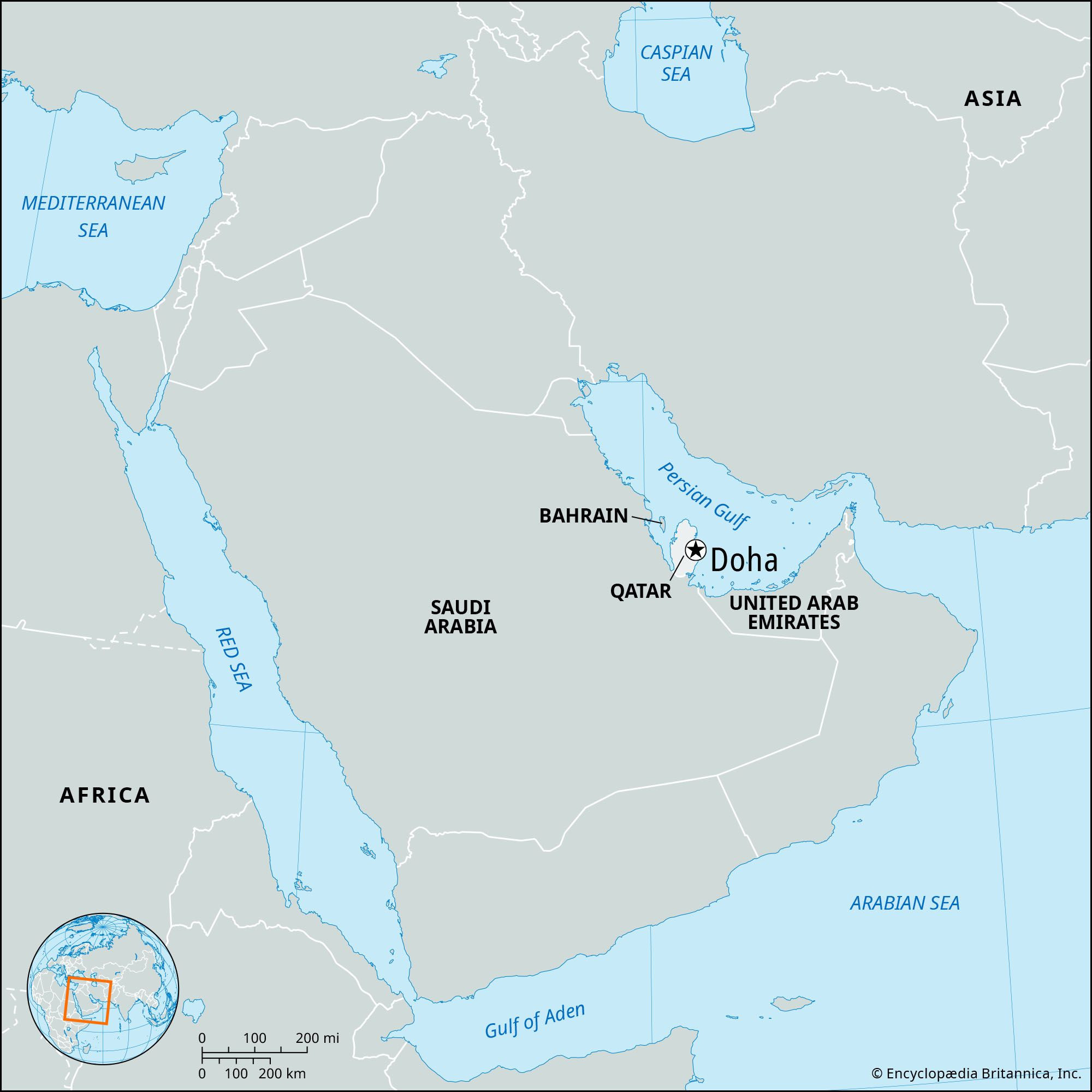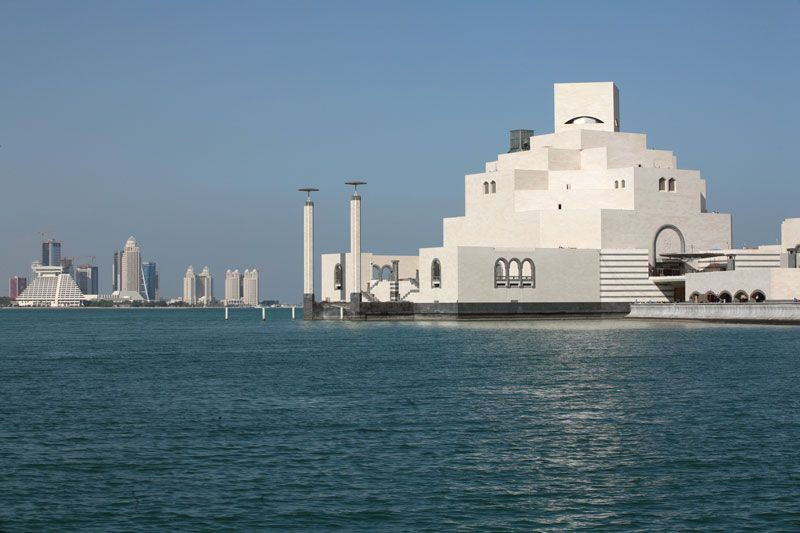Doha, the vibrant capital of Qatar, is situated on the eastern coast of the Qatar Peninsula, bordering the Persian Gulf. This strategic location has been pivotal to Doha’s growth from a small pearling village to a modern metropolis and a significant global hub. Over two-fifths of Qatar’s population resides within this bustling city, making it the heart of the nation.
Doha is nestled in a shallow bay that indents the coastline for approximately 3 miles (5 km). Historically, this bay served as a natural harbor, but its shallow waters and offshore coral reefs limited access to larger vessels. The completion of a deepwater port in the 1970s marked a turning point, enabling Doha to accommodate international shipping and further accelerate its development.
 Locator map of Doha, Qatar, highlighting its location on the Qatar Peninsula in the Persian Gulf.
Locator map of Doha, Qatar, highlighting its location on the Qatar Peninsula in the Persian Gulf.
The city’s origins can be traced back to Al-Bidaʿ, the original quarter located in the northwest, known as Bida among sailors. It is believed to have been established by members of the Sudan tribe who migrated from the sheikhdom of Abu Dhabi. Doha’s coastal position quickly made it a port town involved in the dynamic maritime activities of the 19th-century Persian Gulf. Despite its strategic location, Doha was once a small village and faced destruction in 1867 during a conflict between Bahrain (supported by Abu Dhabi) and Qatar.
A significant year in Doha’s history is 1868, when the British government recognized Muḥammad ibn Thānī Āl Thānī, the sheikh of Doha, as the leading ruler of Qatar. He agreed to adhere to the Perpetual Maritime Truce of 1853, which significantly reduced maritime conflicts in the region and fostered a more stable environment for development. During the late 19th century, the Ottoman Empire, then holding sway over much of the Arabian Peninsula, occasionally stationed a garrison in Doha, reflecting the city’s growing importance. Qatar’s status shifted in 1916 when it became a British protected state, leading to the establishment of a British political agency in Doha. Finally, in 1971, Doha achieved its ultimate status, becoming the capital of the newly independent State of Qatar.
 The Museum of Islamic Art in Doha, Qatar, showcasing its unique architectural design by I.M. Pei against the Doha skyline.
The Museum of Islamic Art in Doha, Qatar, showcasing its unique architectural design by I.M. Pei against the Doha skyline.
For a long time, Doha was a quiet settlement primarily known for pearling and fishing. At the beginning of the 20th century, it boasted around 350 pearling boats. However, the rise of Japanese cultured pearls and the global economic depression of the 1930s dealt a severe blow to Doha’s economy. The discovery and development of Qatar’s substantial oil reserves after World War II dramatically changed the city’s fortunes. This marked the beginning of a profound economic transformation, turning Qatar into an exceptionally wealthy nation with a high per capita income. Doha underwent extensive modernization, with older, less developed areas being replaced by contemporary commercial and residential districts. To address the arid climate, Doha’s water supply is primarily sourced from seawater desalination. The expanded deepwater port now readily accommodates large oceangoing vessels, supporting modern industries like the Qatar National Fishing Company, which operates a state-of-the-art shrimp-packing plant at the port.
Today, Doha offers a blend of historical charm and modern attractions. Key landmarks include Clock Tower Square, the traditional souk (marketplace), and the Government House, built in 1969 on reclaimed land along the waterfront. A significant cultural highlight is the Museum of Islamic Art, a world-renowned institution designed by architect I.M. Pei, inaugurated in 2008 on a dedicated offshore island. For travelers, Doha is served by Doha International Airport, conveniently located just southeast of the city.
With a population of approximately 1.2 million as of 2020, Doha continues to grow and evolve as a major city in the Middle East. Its location, history, and ongoing development make it a fascinating destination for both business and leisure travelers seeking to explore the rich culture and modern advancements of Qatar.
